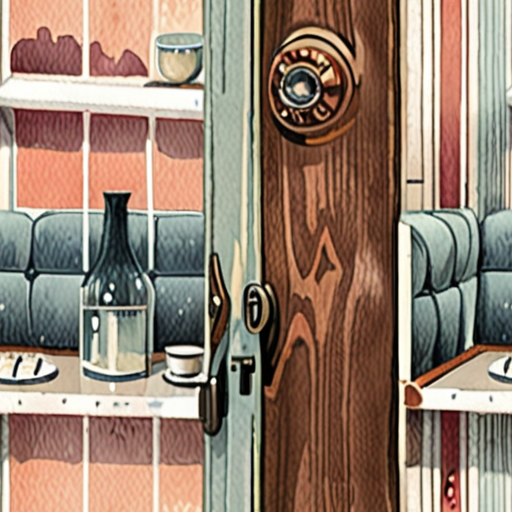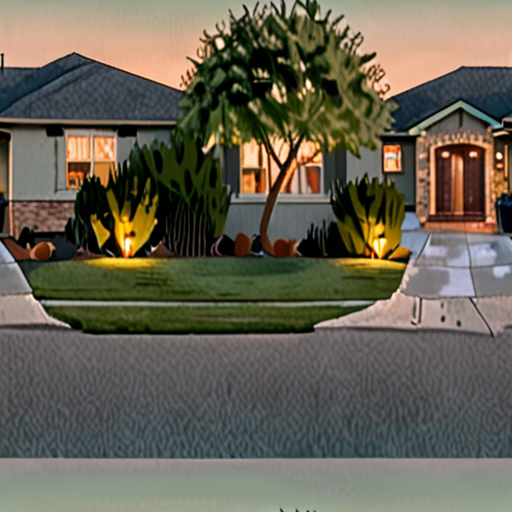When it comes to transforming timeless spaces, modernizing old homes on a budget requires careful consideration of several factors. From choosing a color scheme that complements the existing architecture to selecting furniture pieces that blend traditional and modern styles, there are numerous aspects to take into account. In this article, we’ll delve into the world of home renovation, exploring the intricacies of staying on budget, allocating funds for unexpected expenses, and maximizing your renovation dollars. We’ll also discuss strategies for converting old rooms into modern living spaces, renovating bedrooms with limited financial resources, and enhancing curb appeal through cost-effective exterior updates.

Updating an Old Space to Look Modern
To give an outdated space a fresh, modern look, consider incorporating several key elements into your design strategy. One approach is to introduce textured fabrics, which can instantly add depth and visual interest to a room. Linen, chunky braided wool, velvet, and faux fur are excellent options for achieving this effect. These materials not only bring a sense of warmth and coziness to a space but also provide a tactile experience for occupants.
Lighting Makeover
Replacing outdated light fixtures with newer, more stylish alternatives can significantly impact the overall aesthetic of a room. Consider installing LED bulbs or smart lighting systems to enhance the ambiance and functionality of your space. Not only do these solutions offer improved energy efficiency, but they also provide a sleek, modern appearance that can elevate the entire atmosphere of a room.
Additional Tips for Updating an Old Space
- Incorporate metallic accents, such as gold or silver, to add a touch of sophistication and glamour to your space.
- Update your window treatments with modern curtains or blinds to filter natural light and enhance the overall aesthetic of your room.
- Consider repainting walls with a bold, vibrant color to create a striking focal point in your space.
- Add plants or greenery to bring a sense of nature and serenity to your updated space.
- Invest in a statement piece of furniture, such as a sleek sofa or a minimalist coffee table, to anchor your room and create a cohesive look.
By implementing these design strategies, you can successfully update an old space to look modern and inviting. Remember to balance your design choices with personal style and preferences to create a space that truly reflects your unique taste and personality.
The 30 Rule in Home Renovation
We’ve all heard of the 30 rule in home renovation, but what exactly does it mean? In simple terms, the 30 rule states that you should spend no more than 10% to 30% of your home’s value on renovations.
- This rule helps prevent overspending and ensures that you don’t make costly changes to your property that won’t provide a healthy return on investment.
- For example, if your home is worth $200,000, you shouldn’t spend more than $20,000 to $60,000 on renovations.
- This rule applies to both cosmetic and structural renovations, and it’s essential to consider it before making any major changes to your home.
At Peck and Gartner, we understand the importance of staying within budget and avoiding costly mistakes during home renovations.
Why the 30 Rule Matters
The 30 rule matters because it helps you balance your desire for a beautiful and functional home with the need to stay within budget.
- If you exceed the 30 rule, you may end up with a home that’s overvalued compared to its actual worth.
- This can lead to difficulties selling your home in the future, as potential buyers may view it as overpriced.
- By sticking to the 30 rule, you can ensure that your home remains valuable and attractive to potential buyers.
How to Apply the 30 Rule
Applying the 30 rule is relatively straightforward:
- Determine the value of your home based on recent sales data and comparable properties in your area.
- Calculate the maximum amount you can spend on renovations based on the 30 rule.
- Prioritize your renovation projects and allocate funds accordingly, ensuring that you stay within your budget.
By following these steps, you can apply the 30 rule effectively and enjoy a successful home renovation experience.
Conclusion is Not Required

Is 50,000 Enough to Renovate a House?
When considering a home renovation, determining a suitable budget is crucial. With a $50,000 budget, the feasibility of completing a full renovation depends on various factors.
- The size and condition of the house play significant roles in determining the scope of work required.
- A smaller house with minimal damage may require less extensive renovations, potentially staying within the allocated budget.
- However, larger houses or those requiring major repairs might necessitate exceeding the initial budget.
Factors Affecting Renovation Costs
Several factors contribute to the overall cost of a home renovation:
- Materials and Labor Costs: Prices vary depending on the type and quality of materials chosen, as well as labor costs associated with installation.
- Permits and Inspections: Obtaining necessary permits and passing inspections can add to the overall expense.
- Design and Planning: Hiring professionals for design and planning services can increase costs.
- Unforeseen Issues: Hidden problems, such as structural damage or asbestos, can lead to unexpected expenses.
Renovation Priorities
To maximize the impact of a $50,000 budget, prioritize essential tasks:
- Kitchen and Bathroom Upgrades: Focusing on these high-traffic areas can yield significant returns on investment.
- Electrical and Plumbing Repairs: Addressing safety concerns and outdated systems is crucial.
- Flooring and Painting: Cosmetic improvements can greatly enhance the appearance and feel of the home.
Alternatives to Full Renovation
If a full renovation exceeds the budget, consider alternative options:
- Phase Renovations: Breaking down the project into manageable phases can help stay within budget.
- DIY Projects: Taking on smaller tasks yourself can save money and develop valuable skills.
- Seek Professional Advice: Consulting with experts can help identify cost-effective solutions and prioritize essential work.
Conclusion is Not Required

Converting an Old Room to Modern
We understand that transforming an outdated space into a modern oasis can seem daunting, but with the right approach, you can achieve a stunning result.
-
Assess Your Space
Start by evaluating your room’s layout, lighting, and overall aesthetic. Identify what works and what doesn’t, and make a list of the changes you want to implement.
-
Purge and Declutter
Get rid of any unnecessary items, and organize your belongings in a way that creates a sense of calm and serenity. Consider donating or selling items that are still in good condition.
-
Select a Color Scheme
Choose a palette that reflects your personal style and complements the room’s architecture. Consider factors like natural light, flooring, and furniture when making your selection.
-
Incorporate Modern Elements
Add contemporary touches through furniture, lighting fixtures, and decorative accents. Mix high-tech features with timeless pieces to create a balanced look.
-
Update Lighting Fixtures
Replace outdated lighting with sleek, energy-efficient options. Install dimmers to adjust the ambiance and create a cozy atmosphere.
-
Install Smart Home Devices
Integrate smart technology to enhance convenience, security, and energy efficiency. Control lighting, temperature, and entertainment systems with ease.
-
Add Texture and Pattern
Incorporate various textures and patterns through rugs, throw pillows, and wall art to add depth and visual interest.
-
Consider Professional Help
If you’re unsure about any aspect of the process, consider hiring a professional interior designer or contractor to guide you through the transformation.
By following these steps, you’ll be well on your way to converting your old room into a modern haven that reflects your personality and style.
Additional Tips:
- Invest in multi-functional furniture to maximize space and reduce clutter.
- Use mirrors strategically to create the illusion of larger spaces and add visual interest.
- Experiment with different layouts to find the perfect configuration for your room.
Recommended Resources:
- Houzz – A leading platform for home design and remodeling inspiration.
- Architectural Digest – A premier source for interior design, architecture, and lifestyle content.
- Better Homes and Gardens – A trusted resource for home decor, gardening, and cooking inspiration.
Renovating a Bedroom with No Money
We understand that renovating a bedroom can be a daunting task, especially when working with a limited budget.
- Start by decluttering and organizing your space to give it a fresh start.
- Get creative with second-hand furniture and decor, or repurpose items you already own.
- Paint the walls a new color to instantly update the look and feel of the room.
- Utilize free online resources, such as tutorials and DIY guides, to learn new skills and save money.
- Consider enlisting the help of friends or family members who may have the necessary skills or tools.
- Look for affordable materials and supplies at local thrift stores, garage sales, or discount retailers.
- Think outside the box and get inspired by unique and unconventional decorating ideas.
- Don’t be afraid to ask for help or advice from professionals, such as contractors or designers, who may offer valuable insights and suggestions.
- Take advantage of tax credits or rebates for energy-efficient upgrades or eco-friendly renovations.
- Keep track of your expenses and stay organized with a budgeting spreadsheet or app.
- Be patient and flexible, and remember that small changes can add up over time.
Additional Tips:
When shopping for second-hand items, consider visiting local charity shops, Habitat for Humanity ReStores, or online marketplaces like Craigslist or Facebook Marketplace.
For a quick and easy update, try swapping out light fixtures, adding new window treatments, or installing a statement piece of artwork.
Don’t underestimate the power of a good cleaning and organization routine – a tidy space can look and feel like a million bucks!
Consider hosting a DIY workshop or gathering with friends to share knowledge and skills, and make the process more enjoyable and social.
Remember to always follow safety guidelines and precautions when tackling DIY projects, and don’t hesitate to seek professional help if needed.
Final Thoughts:
Renovating a bedroom on a tight budget requires creativity, patience, and resourcefulness, but with the right mindset and approach, it’s definitely possible to achieve a beautiful and functional space without breaking the bank.

Remodeling an Old House for Cheap
When it comes to remodeling an old house, it’s easy to get caught up in the excitement of giving your home a fresh new look.
- However, it’s essential to remember that remodeling can be expensive, and it’s crucial to find ways to save money without sacrificing style or functionality.
- One of the most significant expenses associated with remodeling is labor costs, which can account for up to 30% of the total budget.
- To minimize labor costs, consider hiring local contractors who may offer lower rates due to their proximity to your location.
- Another cost-effective option is to take on some of the work yourself, such as painting, installing fixtures, or refinishing floors.
- Additionally, repurposing existing elements in your home can save you money and add character to your remodeled space.
- For instance, you can turn old doors into headboards, give kitchen cabinets a new life in a garage or basement storage area, or reuse vintage windows as decorative accents.
- When shopping for materials, look for second-hand stores, salvage yards, or online marketplaces that sell gently used items at discounted prices.
- You can also consider purchasing materials during sales tax holidays or using coupons and discounts offered by retailers.
- Furthermore, think outside the box when it comes to materials – consider using reclaimed wood, brick, or stone to add texture and visual interest to your space.
- Lastly, don’t underestimate the power of DIY projects, which can not only save you money but also provide a sense of accomplishment and pride in your handiwork.
DIY Projects to Save You Money
- Painting walls and ceilings is a simple yet effective way to give your home a fresh new look without breaking the bank.
- Refinishing floors can also be a cost-effective option, especially if you have hardwood or tile flooring.
- Installing new lighting fixtures can greatly impact the ambiance of a room, and it’s often a relatively inexpensive task.
- Upcycling old furniture is another creative way to breathe new life into your space without spending a fortune.
- Consider repurposing old pallets, crates, or boxes to create unique shelves, coffee tables, or headboards.
Additional Tips for Saving Money
- Plan ahead and set a realistic budget to avoid overspending.
- Research local building codes and regulations to ensure compliance and avoid costly fines.
- Shop around for quotes from multiple contractors to compare prices and services.
- Consider working with a general contractor who can oversee the entire project and manage subcontractors.
- Don’t be afraid to negotiate prices or ask for discounts – it never hurts to ask!
Conclusion
Remodeling an old house doesn’t have to break the bank. By repurposing existing elements, taking on DIY projects, and being mindful of costs, you can give your home a fresh new look without sacrificing style or functionality. Remember to plan ahead, shop around, and don’t be afraid to negotiate – with these tips, you’ll be well on your way to a successful and affordable remodel.

0 Comments